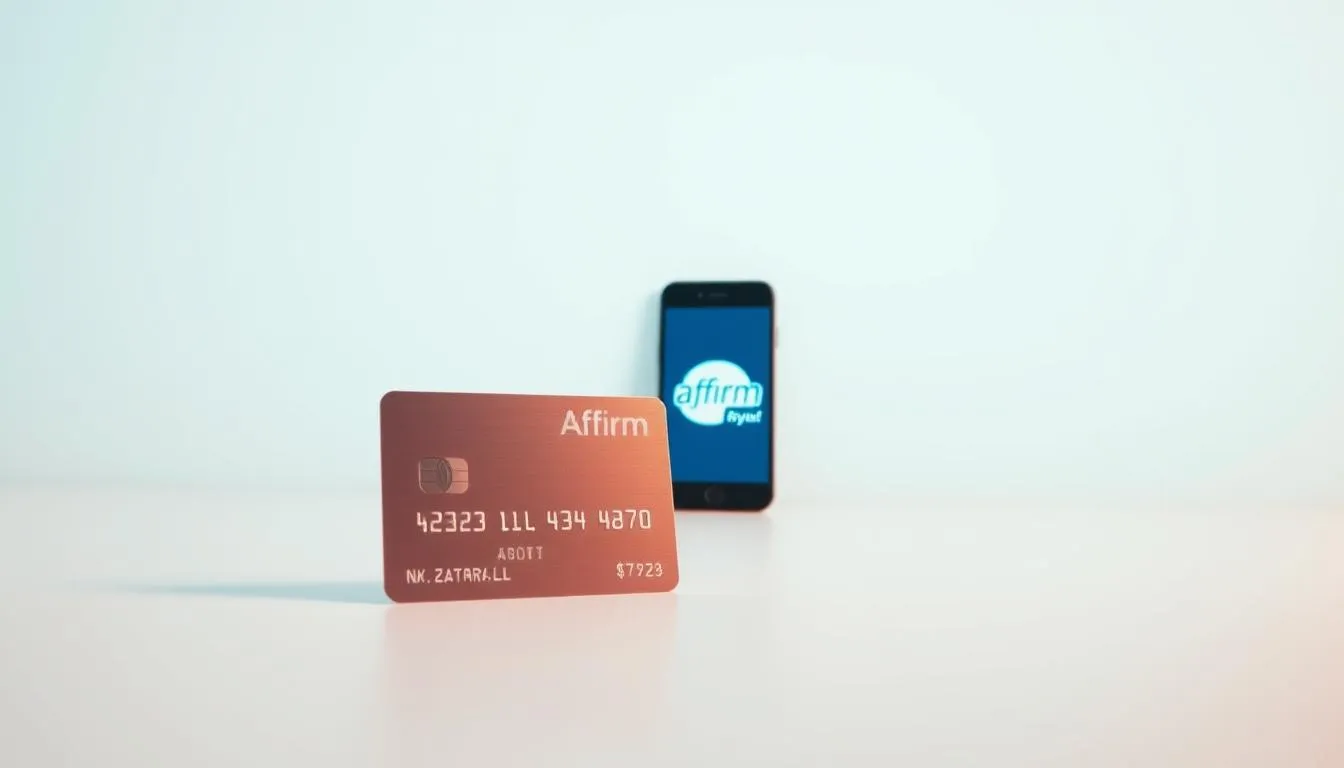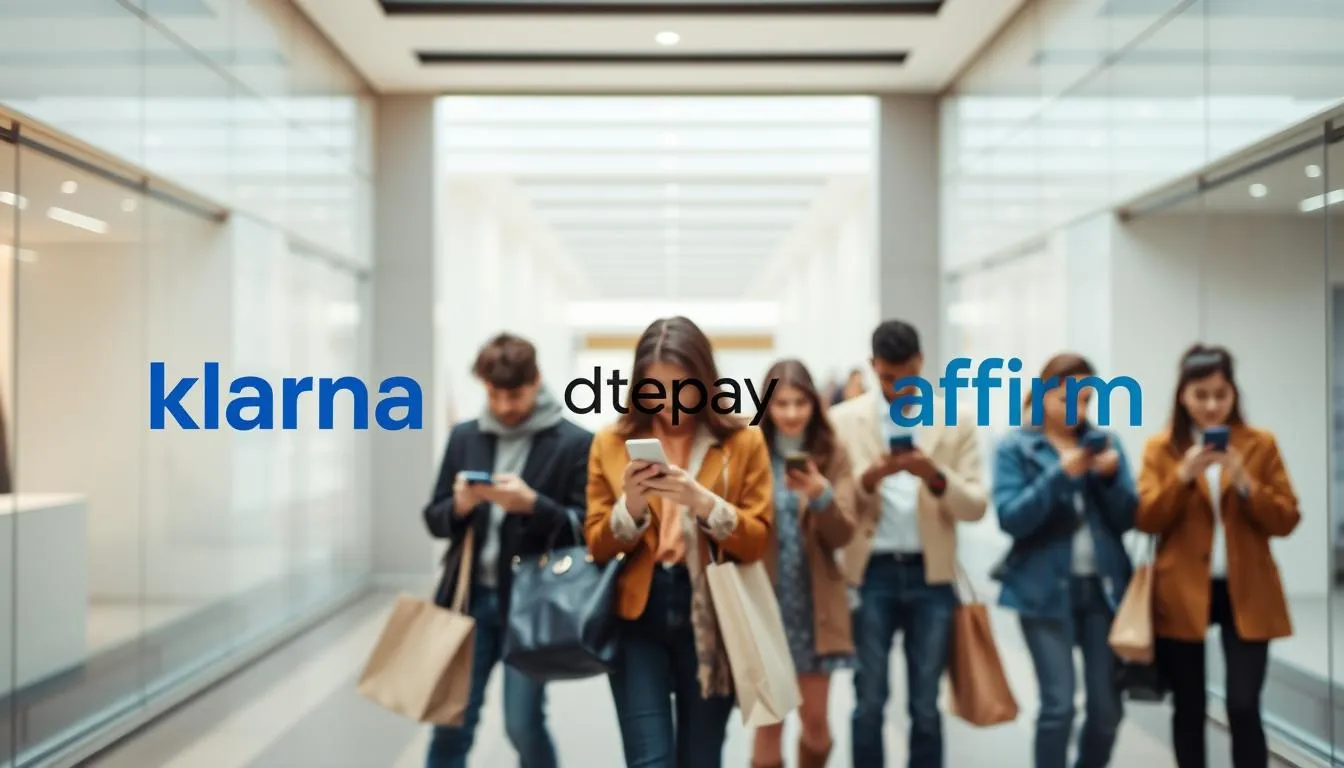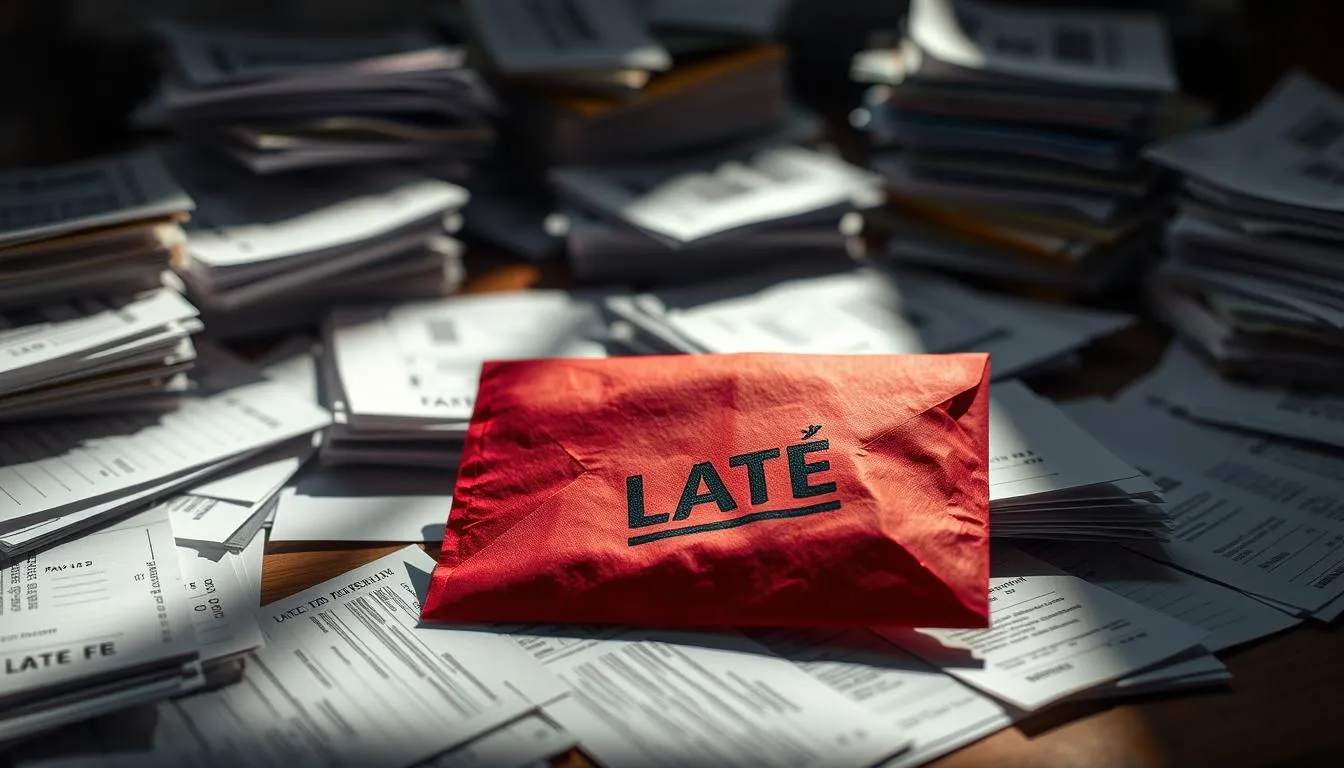Surprising fact: about one in five shoppers have tried buy-now-pay-later options, and usage climbs to nearly 28% among 1824 year olds.
Buy-now-pay-later services let people split purchases into smaller payments over time, often with short interest-free plans.
Consumers choose pay later for access and convenience. Clear terms and flexible payment choices make it easier to fit purchases into a weekly or monthly budget.
Key changes are coming: Affirm will begin reporting pay-over-time accounts to Experian in 2025, which can affect credit history and how credit bureaus see soft credit checks and long-term payment behavior.
This short guide will explain what BNPL is, how payment schedules differ from a credit card or longer loans, and why many people, especially new-to-credit consumers, are turning to pay later options. For those managing multiple payment schedules and financial tools, exploring top money manager apps for budgeting and savings can help you track and organize BNPL payments alongside other financial obligations.
Key Takeaways
- BNPL splits purchases into smaller payments, sometimes interest-free for short terms.
- Roughly 1 in 5 shoppers use pay later tools; adoption is highest among younger consumers.
- Affirms clear terms and multiple plans aim to make payment choices transparent.
- Reporting to Experian in 2025 may help build credit history for timely payers.
- Compare short-term installment options with credit card costs before choosing a payment path.
BNPL in the United States: Setting the stage for a fair comparison
At checkout, split-pay options let people spread cost over weeks with minimal friction. The most common plan is four equal payments over six weeks, often called “Pay in 4.” Approvals can occur in seconds and many systems use a soft credit check or alternative data to decide eligibility.
Each purchase typically creates a separate short-term loan with its own due dates and auto-withdrawals. That structure differs from a single monthly credit card bill, where purchases roll into one revolving balance. For a detailed comparison of similar flexible payment trends, see our analysis of understanding Klarna usage increase and market insights, which shows how BNPL providers are scaling rapidly in the US market.
Retailers often offer BNPL to increase conversions, and apps like like Klarna or Afterpay vary in limits and in-app experience. CFPB guidance urges users to read terms before committing; see this overview of market trends and risks.
| Feature | BNPL (Pay in 4) | Typical Credit Card |
|---|---|---|
| Payment schedule | Four payments over six weeks | Single monthly bill |
| Credit check | Soft credit check or alternative data | Hard credit check for new accounts |
| Impact on credit score | Usually limited unless reported | Reported regularly; affects score |
| Use case | Small to medium online purchases | Everyday spending, large purchases with revolving credit |
“One in five shoppers has used BNPL” a quick snapshot of consumer uptake that explains why comparisons matter.
Why Affirm loans popularity is rising among U.S. consumers
More U.S. shoppers are turning to short-term installment tools to stretch budgets without opening new credit cards. These options combine quick approval with clear schedules so people can plan household spending.

Access for thin or low credit profiles
Soft credit checks and alternative data let many people with limited histories qualify at checkout. Short-term offers often use a soft credit check so approvals feel fast and low friction.
Some plans may ask for a down payment if you dont qualify for the full amount. Reporting to Experian starts April 1, 2025, which could help build credit for timely payers.
Convenience across short and long plans
Pay in 2, Pay in 4, Pay in 30, and longer 360 month options give shoppers flexibility. You can choose interest-free short splits or pick a longer term with simple interest from 0%36% APR.
Transparent terms and fewer penalties
Clear payment schedules and a no-late-fee policy reduce surprise costs and build trust. That predictability, plus speedy approvals compared to many card applications, helps explain why so many people prefer pay later at checkout.
- Fast approvals for small purchases
- Predictable payments and clear interest disclosures
- No late fees and possible credit reporting that can help your credit score
Affirm vs. traditional credit cards: Costs, credit, and control
Simple, fixed payments change how people manage monthly bills compared with revolving card debt.
How interest differs
Installment plans use simple interest, so interest accrues linearly across each payment. That can make a short-term, interest-free plan much cheaper than carrying a card balance.
Credit cards typically apply compounding APR. If you carry a balance, interest compounds across the month and raises total costs.
Fees and penalties
Many pay later providers charge no late fees for standard plans. That reduces surprise charges when a payment slips a week.
Card issuers can assess late fees and penalty APRs. Those fees can push month-to-month costs much higher.
Reporting and score building
Starting April 1, 2025, installment products will report to Experian. Timely payments can help your credit score as reporting grows.
Credit cards already report revolving activity to bureaus. Keeping utilization low on cards often helps a score more quickly.
Spending control and billing
Separate installment loans create predictable, fixed payments for each purchase.
A single revolving balance on a card gives flexibility but can make overall spending harder to track.
| Feature | Installment (simple interest) | Typical Credit Card |
|---|---|---|
| Interest method | Simple interest (0%36% APR) | Compounding APR |
| Late fees | Often none on standard plans | Possible late fees and penalty APRs |
| Credit reporting | Reported to Experian from Apr 1, 2025 | Regularly reported to all major bureaus |
| Spending control | Fixed payments by purchase | Revolving balance across purchases |
“Predictable fixed payments can help some people stay on track, while others may prefer the flexibility of a single statement.”
- When you plan to pay in full quickly, pay later options can lower total costs.
- If you need flexibility or rewards, a card may suit you but watch utilization and fees.
- Consider reporting rules: consistent on-time installment payments can help build credit over time.
Klarna vs Affirm vs Afterpay: How BNPL options stack up for 2025 shoppers
Not all buy-now-pay-later plans are created equal. Below is a practical comparison of short splits, longer financing, card access, and reporting rules to help you pick the right option for a specific purchase.

Short-term plans: Pay in 4 over six weeks and key differences
Pay in 4 is common across providers and spreads a purchase into four payments over six weeks with no interest for qualifying buys.
Klarna and Afterpay may apply a small late fee ($7$8 cap in the U.S.), while one provider keeps a no-late-fee policy. All three typically use a soft credit check for these short splits.
Longer financing: APR ranges, durations, and eligibility checks
Longer monthly plans carry interest. Klarna offers 7.99%33.99% APR (348 months). Afterpay lists roughly 6.99%35.99% (6 or 12 months). One provider ranges 0%36% APR (360 months) using simple interest.
Expect stricter credit checks and higher eligibility standards for multi-month financing compared with short splits.
Cards and in-store use
Each company issues a card that lets you shop outside partner merchants. Cards function like a credit card for merchant acceptance but differ in fees and signup checks.
Klarnas Visa card may charge a $1$3 service fee at non-partner stores (waived for some subscriptions). Afterpay and the other card options integrate with in-store flows and some digital wallets.
Credit reporting practices
Klarna generally does not report pay-in-4 activity in the U.S.; Afterpay reporting varies by product and region. The third provider will begin reporting pay-over-time accounts to Experian on April 1, 2025, which may affect credit if payments are missed or on time.
| Feature | Klarna | Afterpay | Other provider |
|---|---|---|---|
| Short split | Pay in 4 (no interest; late fees up to $7) | Pay in 4 over six weeks (no interest; late fees up to $8) | Pay in 2/4/30 (no interest on short plans; no late fees) |
| Longer APR | 7.99%33.99% (348 months) | 6.99%35.99% simple APR (6 or 12 months) | 0%36% simple APR (360 months) |
| Card use | Klarna Card (Visa); $1$3 non-partner fee | Afterpay Card; in-store + Cash App ties | Card accepted where Visa is accepted; broad reach |
| Reporting | U.S. pay-in-4 generally not reported | Varies by product and region | Comprehensive reporting to Experian from Apr 1, 2025 |
“Compare fees, durations, and reporting before you pick a plan small differences add up.”
- Short splits are low-cost for planned purchases.
- Long-term options have varying interest rates and stricter checks.
- Card options widen where you can use pay later, but watch service fees at non-partner merchants.
Credit score impact: Soft credit checks, reporting to credit bureaus, and missed payments
What shows up on your record depends on three things: the type of credit check, whether providers report activity, and if you make payments time.
How light screening works and when a hard pull may happen
Short splits usually use a soft credit check. That keeps approvals fast and does not harm your score. Longer-term plans or higher limits can trigger a full credit check or hard pull.
Reporting changes and effects on credit history
Starting April 1, 2025, one major provider will report pay-over-time accounts to Experian. When installment accounts appear at credit bureaus, they can help build a steady credit history if payments are on time.
Consequences of late or missed payments across providers
Even if a plan waives late fees, missed payments may still be reported. That can lower your credit score and complicate future card or loan approvals.
“On-time behavior matterstimely payments can boost your credit history as reporting grows.”
- Read the user agreement to see what is reported.
- Use autopay and reminders to avoid miss payments and keep accounts in good standing.
- Match due dates to paydays to help make payments time and protect your credit scores. For comprehensive budgeting strategies that work well with BNPL schedules, explore our guide on understanding Afterpay budgeting trends in the US, which provides practical tips for managing flexible payment schedules within your overall financial plan.
Total cost realities: Interest rates, late fees, and the hidden risks of pay later
Small installment plans can feel harmless, but the total cost can add up faster than you expect.

Late fees vs no late fees: Klarna, Afterpay, and a no-fee option compared
Klarna may charge late fees up to $7 on Pay in 4. Afterpay caps similar fees near $8 in the U.S.
One provider keeps a no-late-fee policy; that can spare small balances but does not remove other risks.
The psychology of small payments and overspending risk
Small payments lower the pain of purchase and can nudge higher spending. Multiple short plans can snowball into real debt if you miss payments across providers.
Returns, refunds, and timeline friction
Refunds often require merchant and the pay later platform to process separately. That doubles the steps and can tie up your money for weeks.
| Issue | What to watch | Why it matters |
|---|---|---|
| Late fees | Klarna $7 / Afterpay $8 / No-fee option | Small charges add up over multiple purchases |
| Interest & interest rates | Higher on long-term plans | Extending term can cost more than short splits |
| Credit impact | Missed payments may report | Can affect credit and show at credit bureaus |
“Important remember: read fee and return terms before you click ‘pay later’.”
- Set reminders and space purchases to avoid missed payments.
- Check interest on longer planssmall rates over months grow fast.
- Match due dates to paydays to protect your money and credit.
Market signals: What fintech stock moves reveal about BNPL risk and resilience
Stock swings in fintech reveal how fragile investor confidence can be when macro shocks arrive. Since tariff announcements, several fintech lenders fell more than 20%. One firm slid about 24% even as it reported strong growthGMV rose 35% to $10.1B in the quarter ending Dec 2024.
Why the market dropped while volume rose: investors worry that rising interest rates and wider rate spreads increase funding costs for nonbank lenders.
Affirms growth vs investor caution
Strong GMV shows customer demand, but analysts split on outlook. Some see a buying opportunity; others expect pullbacks around earnings as institutions tighten credit lines.
Funding costs and future loan pricing
Higher spreads mean higher costs for lenders. That can push up loan pricing, reduce origination, or tighten approvals. Those moves affect how people access credit and how card-like in-store offers operate.
“Money flows from institutional lenders can make or break BNPL resilience in stressed markets.”
Consumers should watch provider updates and earnings calls. If credit tightens, consider delaying big purchases or using familiar providers to reduce surprise changes in terms or payments.
Who should use BNPL vs credit cards: Matching products to profiles and goals
Pick the payment tool that fits your cash flow and long-term credit goals. Some people need quick access at checkout while others want rewards and ongoing reporting. This short guide helps you match tools to goals.
Low credit score or limited history: access trade-offs and responsible use
Pay later plans often approve thin-file consumers with a soft check. That makes them useful for essentials when credit history is limited.
Use short, interest-free splits for planned buys and avoid stacking multiple plans. Track each payment and set reminders so missed payments don’t harm your score.
Rewards seekers and credit builders: when a credit card may be better
If you want points, extended warranties, or steady bureau reporting, a credit card can be smarter for everyday spending. Cards report regularly and can build credit scores when you pay on time.
- Bridge purchases: use pay later for fixed short buys while you build a credit history.
- Use cards for: recurring bills, travel protections, and rewards.
- Responsible habits: align payments to paydays, limit providers, and enable autopay to protect your credit score.
“Match one tool to the job: installments for fixed costs, cards for rewards and flexibility.”
Smart usage strategies: Make payments on time and avoid debt spirals
Treat pay-later plans like mini-budgets to prevent overlapping due dates and surprise bills. A simple routine cuts stress: plan, purchase, pay, and move on.
Budget for six-week cycles and align due dates with paychecks
Many short splits use a six-week cadence. Budgeting for that cycle helps you make payments on time without crowding your month.
Match each due date to a paycheck. That makes it easier to cover payments and protect your credit score.
Stick with one BNPL provider to simplify tracking
One app, one dashboard: choose a single pay later provider when possible. Tracking is easier and you avoid overlapping reminders.
Using the same provider can reduce the chance to miss payments and lower the mental load of multiple accounts.
Use autopay and alerts; space purchases to protect cash flow
Autopay and phone alerts cut missed payments dramatically. Set reminders a few days before each withdrawal.
Space purchases across weeks so your card and cash flow arent overloaded in one month. If you do miss payments, contact the provider early and prioritize essentials first.
“Plan purchases around paydays and use autopay to keep small plans from turning into big problems.”
- Verify return timelines refunds can take longer with pay later.
- Limit concurrent plans and avoid stacking multiple small payments in the same week.
- Use money apps or calendar reminders to make payments time and protect your credit.
Conclusion
important remember, before you tap pay later, pause and match the plan to your payday and budget.
People like the speed and access of split payments. Using BNPL can help when you plan and pay on time. But small installments still create real obligations and possible debt if you lose track of payments.
We compared fees, reporting, and credit trade-offs so you can buy something with more confidence. If you are using buy later tools, stick with one provider, set reminders, and read terms carefully.
When a card fits better, watch balances and compounding interest. With a clear plan, pay later can support your money goals instead of stressing them.
FAQ
What makes buy now, pay later services like Affirm attractive to U.S. shoppers?
Many consumers like the simplicity and short-term flexibility BNPL offers. Options such as pay-in-4 plans spread small purchases into interest-free installments over six weeks, while longer terms provide predictable monthly payments. Soft credit checks for certain plans and clear repayment schedules can feel more approachable than traditional revolving credit.
Does using BNPL hurt my credit score?
It depends. Some providers perform soft credit checks that dont affect scores, but a hard pull can occur for longer financing. Since certain BNPL firms began reporting to credit bureaus like Experian, on-time payments may help build a positive history, while missed payments can damage your score.
How do BNPL interest rates compare with credit card APRs?
Short-term, interest-free BNPL options often beat typical card APRs because they charge no interest if paid on time. However, longer-term BNPL plans can carry APRs comparable to or higher than credit cards. Always compare the simple interest on an installment plan to a cards compounding APR for the full picture.
Are there late fees with BNPL services like Klarna or Afterpay?
Policies vary. Some BNPL providers promote no late fees, while others assess late or missed payment charges and may restrict future use. Even without a fee, missed payments can trigger collections or negative reporting, so timely payments remain crucial.
Will BNPL show up on my credit report?
Increasingly, yes. Several BNPL companies now report to at least one major bureau. If a provider reports accounts, on-time payments can help and missed payments can hurt. Check the specific services current reporting policy before using longer-term financing.
Can BNPL be used in-store or only online?
Many providers offer cards or in-store payment options that work at physical retailers. These products let shoppers use the same buy-now-pay-later features in-store as online, though merchant participation and transaction limits can differ.
How do BNPL installment plans affect budgeting and spending?
Small recurring payments can make purchases feel affordable, but that can also encourage overspending. To avoid debt spirals, budget for six-week cycles, align due dates with paychecks, and avoid opening multiple BNPL plans at once.
If I return an item bought with BNPL, how are refunds handled?
Refund timelines vary. Typically the merchant issues the refund and the BNPL provider adjusts your payment schedule or refund balance. Delays can occur because a third party mediates the transaction, so keep receipts and contact both merchant and provider if timing is unclear.
Who is better suited to use BNPL versus a credit card?
BNPL can help people with thin or low credit access short-term financing with predictable installments. Credit cards often suit rewards seekers, those building long-term credit, or people who can pay off revolving balances monthly. Match the product to your goals, credit history, and ability to make on-time payments.
Can using BNPL help build credit for someone with limited history?
Potentially. If the provider reports to credit bureaus and you make timely payments, installment history can support credit-building. If the service doesnt report, it wont help, so confirm reporting practices first.
What should I watch for in the fine print before choosing a BNPL plan?
Look for APR on longer plans, whether the initial check is soft or hard, how the company reports to credit bureaus, late or returned payment policies, and any service fees at non-partner merchants. Transparency on interest and fees helps you compare cost and risk versus credit cards.
Are there hidden risks with pay later services beyond interest and fees?
Yes. The psychology of small payments can mask total cost and encourage repeated purchases. Also, multiple overlapping plans can strain cash flow. Be mindful of cumulative monthly obligations and use autopay and alerts to avoid missed payments.
How do market conditions affect BNPL providers and their rates?
Rising funding costs and higher interest-rate environments squeeze nonbank lenders, which can push firms to tighten underwriting or raise rates on longer-term plans. Stock movements and investor sentiment also reflect perceived growth prospects and recession risks.
What practical steps help avoid BNPL-related problems?
Budget around your pay schedule, keep purchases to what you can afford, use one provider to simplify tracking, enable autopay, and set calendar reminders. Prioritize paying on time to protect your credit and avoid fees or service restrictions.
